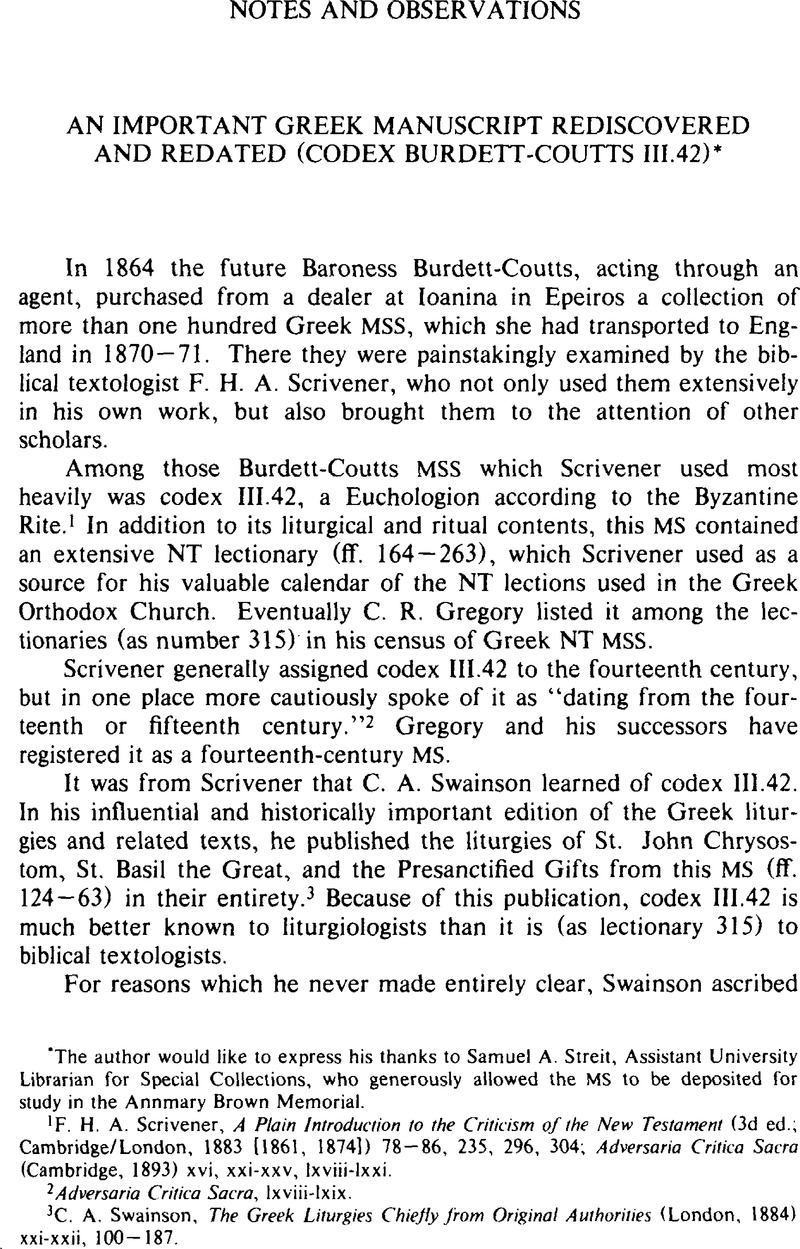Published online by Cambridge University Press: 10 June 2011

1 Scrivener, F. H. A., A Plain Introduction to the Criticism of the New Testament (3d ed.; Cambridge/London, 1883 [1861, 1874]) 78–86Google Scholar, 235, 296, 304; Adversaria Critica Sacra (Cambridge, 1893)Google Scholar xvi, xxi-xxv, IXVIII-lXXI.
2 Adversaria Critica Sacra, lXVIII-IXIX.
3 Swainson, C. A., The Greek Liturgies Chiefly from Original Authorities (London, 1884)Google Scholar xxi-xxii, 100–187.
4 Call-number: BX36O, A2, 1400, Koopman Collection, MSS.
5 A full description of the MS may be found in this catalogue, which the author and C. J. Denning are preparing for publication.
6 Mošin, V., Anchor Watermarks (Monumenta Chartae Papyraceae Historiam Illustrantia 13; Amsterdam, 1973) 50–63Google Scholar, watermarks 1530–1982.
7 Among the Greek Orthodox Euchologia which have been described in detail there is only one which greatly resembles codex Burdett-Coutts 111.42 in its contents: MS 523 in the collection of the Dionysiou Monastery on Mt. Athos, described by Dmitrievskij, A., Opisanie liturgičeskix rukopisej, xranjaščixsja v bibliotekax Pravoslavnago Vostoka, vol. 2: Euchológia (Kiev, 1901) 963– 67Google Scholar. The fact that this closely related MS was written, according to its colophon, in 1613 may further confirm the ascription of codex III.42 to the second half of the sixteenth century or the very early seventeenth century.